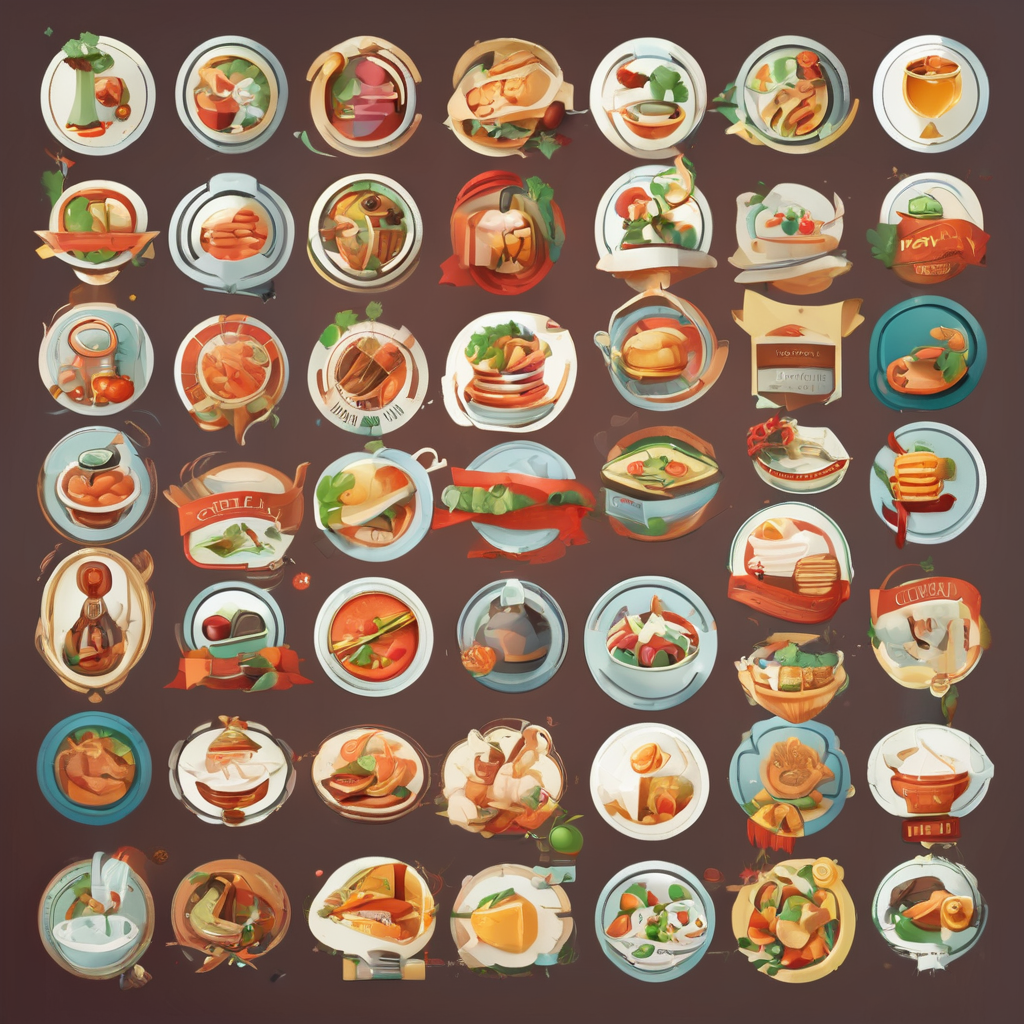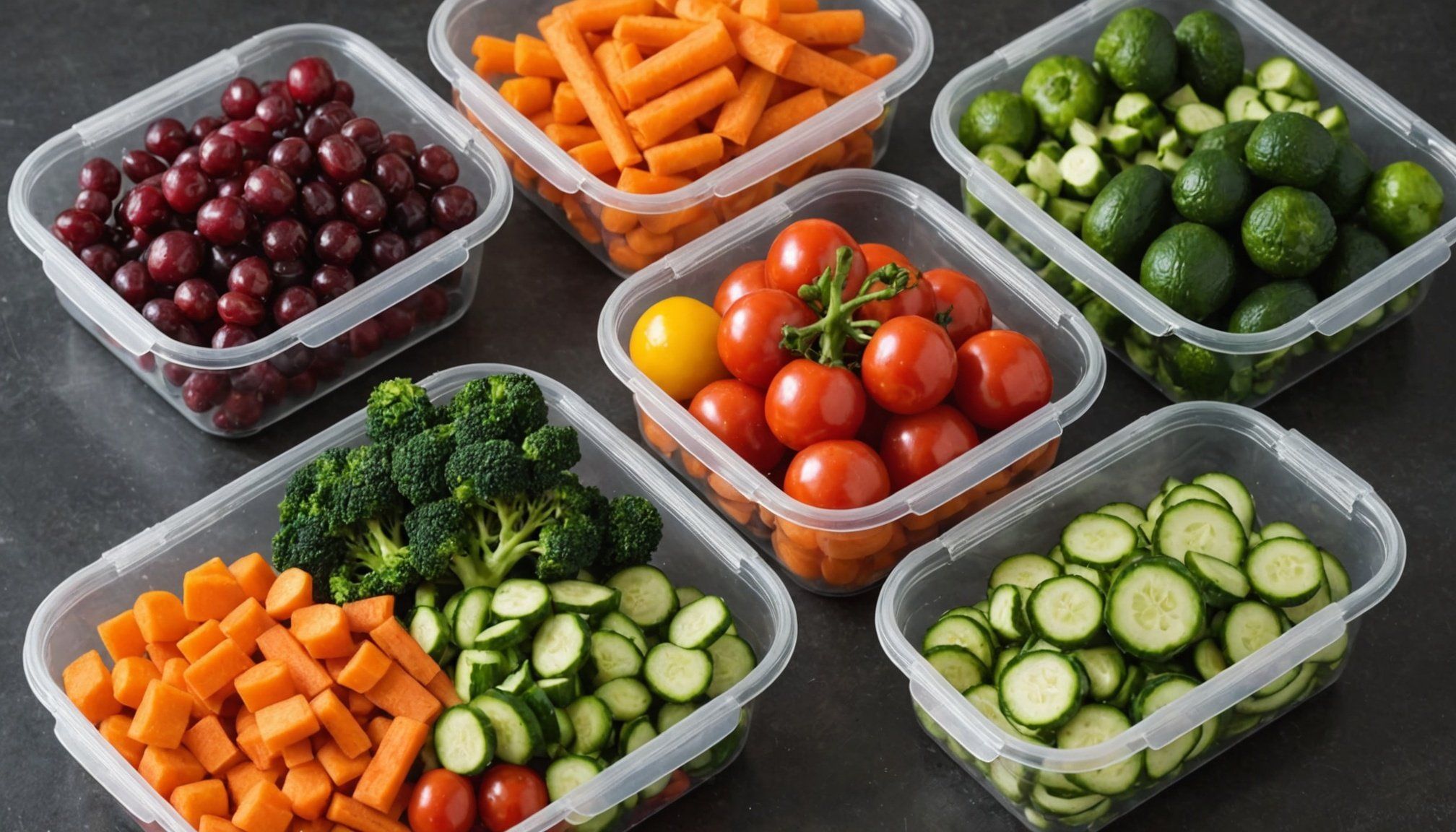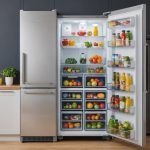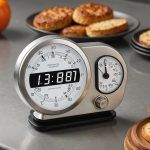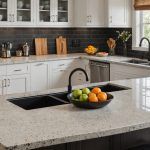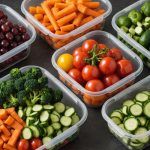Ultimate Guide to Freshness: Best Containers for Storing Pre-Cut Vegetables for Healthy Snacking
When it comes to maintaining the freshness and quality of pre-cut vegetables, the right storage containers can make all the difference. Whether you’re a busy professional looking to prep healthy meals or a home cook aiming to reduce food waste, choosing the best containers is crucial. Here’s a comprehensive guide to help you select and use the ideal containers for your pre-cut vegetables.
Understanding the Importance of Proper Storage
Proper storage is key to extending the shelf life of pre-cut vegetables. Unlike whole produce, cut vegetables are more susceptible to spoilage due to increased exposure to air, moisture, and ethylene-producing fruits. Here are some reasons why proper storage is essential:
This might interest you : Ultimate guide to selecting kitchen countertops that resist bacteria: your path to a healthier home
- Prevents Oxidation: Cutting vegetables exposes them to oxygen, which can lead to browning and spoilage. Airtight containers prevent air exposure, keeping your vegetables fresh for longer[1].
- Maintains Moisture: Excess moisture can cause vegetables to become soggy and spoil faster. Using paper towels or the right type of container helps in controlling moisture levels[1].
- Reduces Ethylene Exposure: Ethylene-producing fruits like apples and bananas can accelerate the spoilage of sensitive vegetables. Storing them separately is vital[1].
Choosing the Best Containers
The market is flooded with various types of containers, each with its own set of benefits. Here’s a detailed look at some of the best options:
Airtight Containers
Airtight containers are a staple for storing pre-cut vegetables. Here are some features to look for:
In parallel : Uncover the ultimate digital nutrition scale for flawless macronutrient monitoring in your slimming kitchen!
- Material: Glass or BPA-free plastic containers are excellent choices. Glass containers are non-reactive and can be used in the freezer, fridge, or even the microwave (if microwave-safe). BPA-free plastic containers are lightweight and often come with tight-fitting lids[1][3].
- Clear Containers: Clear containers make it easy to identify the contents without having to open them, reducing the likelihood of forgetting about stored vegetables[1].
- Stackable Design: Stackable containers maximize space efficiency in the refrigerator, making them ideal for meal prep and storage[1].
Specialized Produce Keepers
For specific types of vegetables, specialized produce keepers can be incredibly effective:
- Lettuce Keepers: Products like the OXO Good Grips GreenSaver and the Rubbermaid FreshWorks Produce Saver are designed with adjustable vents and built-in filters to maintain optimal humidity levels. These keepers are particularly good for leafy greens and other delicate vegetables[2].
- Herb Savor Pods: For herbs, which tend to go bad quickly, herb savers with built-in hydrating systems can triple their lifespan. These pods keep herbs crisp and prevent them from becoming soggy[2].
Tips for Storing Pre-Cut Vegetables
Here are some practical tips to ensure your pre-cut vegetables stay fresh for as long as possible:
Using the Right Type of Packaging
- Airtight Containers or Resealable Bags: Store cut vegetables in airtight containers or resealable plastic bags. Remove as much air as possible before sealing to reduce oxidation[1].
- Paper Towels: Place a damp paper towel inside the container to maintain moisture without causing sogginess. This is especially useful for leafy greens[1].
- Water Storage: For vegetables like carrots and celery, storing them in water can help maintain crispness. Change the water daily to prevent bacterial growth[1].
Optimal Use of Refrigerator Space
- Crisper Drawer: The crisper drawer is ideal for storing most cut vegetables due to its controlled environment with higher humidity. Adjust humidity settings based on the type of vegetable[1].
- Separate Storage: Keep different types of cut vegetables separate to prevent faster-spoiling items from affecting others. For example, store ethylene-producing fruits away from sensitive vegetables[1].
- Single Layer Arrangement: Arrange vegetables in a single layer when possible to minimize bruising and maintain texture[1].
Enhancing Longevity of Cut Vegetables
Besides using the right containers, there are several other methods to enhance the longevity of your cut vegetables:
Sealing in Freshness
- Vacuum-Sealed Bags: Vacuum-sealed bags can extend freshness by removing all air from around the vegetables. This method is particularly effective for items like carrot sticks or bell pepper slices[1].
- Blanching and Freezing: For longer storage, consider blanching vegetables before freezing to preserve color, texture, and nutrients. This is a great way to prep vegetables for future meals[1].
Dealing with Different Vegetable Types
Different vegetables have unique storage needs. Here’s how to handle some common types:
Soft Vegetables and Fruits
- Tomatoes: Store sliced tomatoes in airtight containers lined with paper towels. They can last 3-5 days when properly stored[1].
- Bell Peppers: Cut bell peppers can stay fresh for up to 5 days when stored in sealed containers or wrapped tightly in plastic wrap[1].
- Cucumbers: Keep cucumbers dry and cool to prevent sogginess. They remain crisp for 1-2 days after cutting[1].
Hardier Vegetables
- Carrots and Celery: These can be stored in water to maintain crispness. Change the water daily to prevent bacterial growth. They can last up to a week when stored correctly[1].
Comparative Table of Storage Containers
Here’s a comparative table to help you choose the best container for your needs:
| Container Type | Material | Features | Best For | Price Range |
|---|---|---|---|---|
| OXO Good Grips GreenSaver | BPA-free Plastic | Adjustable vent, carbon filter | Leafy greens, delicate vegetables | $10-$20[2] |
| Rubbermaid FreshWorks Produce Saver | BPA-free Plastic | FreshVent technology, built-in filter | Leafy greens, mixed vegetables | $15-$30[2] |
| Cambro Translucent Round Storage Container | BPA-free Plastic | Stackable, clear measurement markings | General storage, meal prep | $10-$20[3] |
| Pyrex Storage Plus | Glass | Microwave, freezer, and dishwasher safe | General storage, meal prep | $10-$20[4] |
| Herb Savor Pods | Plastic | Built-in hydrating system | Herbs | $5-$10[2] |
Practical Insights and Actionable Advice
Here are some practical insights and actionable advice to help you make the most out of your storage containers:
- Label and Date Containers: Always label and date your containers so you can easily identify what you have stored and how long it has been there. This helps in using older items first and reducing waste[1].
- Clean Containers Regularly: Ensure your containers are clean and dry before storing vegetables. This prevents bacterial growth and keeps your vegetables fresh for longer.
- Use the Right Tools: For meal prep, use prep containers that are easy to clean and stackable. This makes meal prepping efficient and organized.
Quotes from Experts and Users
- “Airtight containers are essential for storing cut vegetables. These containers prevent air exposure, which can lead to oxidation and spoilage,” says a food storage expert[1].
- “I love these Cambro containers. They are sturdy, strong, and wash well. The clear measurement markings make it easy to see what I have stored,” says a satisfied user[3].
- “The OXO Good Grips GreenSaver has been a game-changer for my leafy greens. The adjustable vent and carbon filter keep them fresh for much longer,” notes a home cook[2].
Storing pre-cut vegetables effectively is a combination of choosing the right containers, using proper storage techniques, and understanding the specific needs of different vegetable types. By investing in high-quality storage containers and following these tips, you can enjoy fresh-tasting vegetables throughout the week, reduce food waste, and make meal prep a breeze.
Whether you’re using glass containers, BPA-free plastic containers, or specialized produce keepers, the key is to maintain a controlled environment that prevents oxidation, controls moisture, and keeps ethylene-producing fruits at bay. With the right tools and a bit of knowledge, you can keep your vegetables fresh and ready for healthy snacking.
